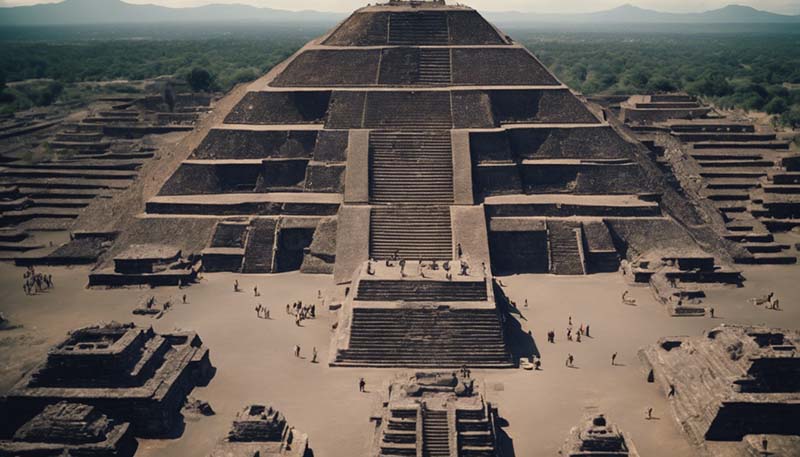The Ancient City of Teotihuacan: The Mysteries of Mesoamerica
The ancient city of Teotihuacan is a fascinating archaeological site located in Mexico, just northeast of present-day Mexico City. It was once one of the largest and most important cities in Mesoamerica, and its ruins still stand as a testament to the advanced civilization that once thrived there.
History
Teotihuacan was founded around the 1st century BCE and reached its peak during the Classic period (250-650 CE). At its height, the city covered over 8 square miles and was home to over 100,000 people. It was a major religious and cultural center, and its influence extended throughout the region.
Advertisement
Despite its importance, the history of Teotihuacan is shrouded in mystery. The city's original name is unknown, and the name "Teotihuacan" was given to it by the Aztecs, who believed it was the birthplace of the gods. Little is known about the people who built and inhabited the city, and their language and culture remain largely a mystery.
Architecture
Teotihuacan is famous for its impressive architecture and urban planning. The city was laid out on a grid system, with wide streets and avenues that intersected at right angles. The main thoroughfare, known as the Avenue of the Dead, runs north-south through the center of the city and is lined with temples and pyramids.
The most iconic structures in Teotihuacan are the Pyramid of the Sun and the Pyramid of the Moon. The Pyramid of the Sun is the third-largest pyramid in the world and was once the tallest structure in Mesoamerica. The Pyramid of the Moon is located at the north end of the Avenue of the Dead and is flanked by the remains of the Quetzalpapalotl Temple and the Palace of the Jaguars.
Religion
Religion played a central role in the lives of the people of Teotihuacan. The city was home to numerous temples and shrines dedicated to various gods and goddesses. The most important deity worshipped at Teotihuacan was Tlaloc, the god of rain and fertility, whose image is depicted in many of the city's sculptures and murals.

Human sacrifice was also an important part of the religious practices at Teotihuacan. Archaeologists have discovered the remains of sacrificial victims buried beneath several of the city's pyramids and temples. It is believed that these sacrifices were made to appease the gods and ensure the continued prosperity of the city.
Decline and Abandonment
The decline of Teotihuacan is still a subject of debate among historians and archaeologists. Some believe that the city was abandoned due to environmental factors, such as drought or soil erosion, while others argue that internal conflict or external invasion may have contributed to its downfall.
Whatever the cause, by the 7th century CE, Teotihuacan was largely abandoned and its once-thriving civilization had come to an end. The city was not completely forgotten, however, and the Aztecs later revered it as a sacred site and incorporated many of its religious practices and beliefs into their own culture.
Modern-day Significance
Today, Teotihuacan is a popular tourist destination and a UNESCO World Heritage Site. Visitors can explore the ruins of the city and marvel at the impressive architecture and engineering that went into its construction. The site is also an important center for archaeological research, with new discoveries and insights into the ancient civilization continuing to be made to this day.
Teotihuacan remains a fascinating and enigmatic site, offering a glimpse into the advanced civilization that once flourished in Mesoamerica. Its mysteries continue to captivate the imagination of visitors and scholars alike, and its legacy lives on as a testament to the rich cultural heritage of the region.
Further Reading:
Comments